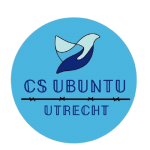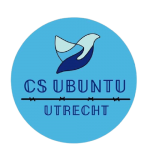Migrant Pushbacks
Due to the pandemic, for a long time now, there has been some media silence around the migration issues the EU has been facing in the past decade. However, recent developments in Afghanistan raise new questions about how to approach the (expected) refugees and what policy should be deemed appropriate.
This provides an opportunity to take a look at EU migration policy today, which is increasingly characterized by so-called migrant pushbacks.
‘’Push-backs are a set of state measures by which refugees and migrants are forced back over a border – generally immediately after they crossed it – without consideration of their individual circumstances and without any possibility to apply for asylum or to put forward arguments against the measures taken.’’ – ECCHR
Activist and sociologist Felis Weiss calls the recent increase in these push-backs “unlawful and unacceptable”. The organization Sea Watch International describes an instance in which refugees – swimming and fighting for their lives on sea – were saved, only to be sent back to their native countries, where all 170 passengers awaited “persecution, torture and potentially death.”
Research collective Forensic Oceanology notes this increase, describing how between 2011 and 2018 there was only one instance of so-called ‘privatized push-back’. This privatized pushback, in which commercial ships return refugees to their country of origin, occurred 30 times in the period between 2018 and 2020. Refugees from the Balkans have cynically referred to the journey as a “cruel game”, where authorities increasingly offer intimidation and violence, rather than the sought-after protection and safety.
Most well-known pushbacks are those that take place at sea. Many images in the popular newspapers show the typical small boats full of migrants; these are then pushed back by large motor boats. The big boats continue to circle around the small boats in such a way that waves are created and migrants are driven back by the stream to territorial waters of other countries, such as Turkey or Libya. Although this is a well-known method, it is certainly not the only one, and certainly not the most brutal.
Several human rights organizations, such as Amnesty International and Human Rights Watch, report on the situation on the Western Balkan route. There, authorities regularly use force to push back migrants. For example, the migrants are beaten with batons, receive electric shocks and are deliberately attacked by dogs.
The migrants are also forced to take off their clothes, whereafter they spend the night unclothed in freezing temperatures. Also, migrants whose shoes have been taken away and are forced along rough railways, back into other territories.
By pushing migrants back into territorial areas of other, often non-EU countries, the responsibility to offer migrants asylum is ignored and shifted. However, what happens to the migrants next is often unclear. For example, migrants who end up in Libyan territory often fall off the radar by the hundreds. The worst is feared by the IOM; that these migrants disappear into human trafficking and may even be used for proxy-wars that are not theirs.
All states must ensure that human rights are at the centre of their migration governance, including the prohibition of collective expulsions, the principle of non-refoulement, the right to seek asylum, the right to life, and the prohibition of torture.
Thus, defined under international law and in the EU Convention for the Protection of Human Rights and Fundamental Freedoms, every case of expulsion should be decided on an individual basis, whereby States are obligated to conduct a reasonable and objective examination of each person’s relevant circumstances.
Moreover, in the internationally defined 1951 Refugee Convention and the EU law, the principle of non-refoulement was adopted: it prohibits states from all forms of removal and transfer of refugees to the frontiers of territories where the person is at risk of serious human rights violations. Article 3 of the Convention against Torture expanded the scope of its protection, as states parties may not refouler a person to another State where he would be in danger of being subjected to torture.
Additionally, push-backs are inconsistent with one particular article of the United Nations Convention on the Law of the Sea: the duty to assist persons in distress at sea. The overcrowded vessels indicate a direct danger of migrants’ lives and safety, requiring immediate assistance. Even though, for example Frontex, is obligated to provide assistance, the patrol boats do not interfere, and even worse, bring migrants in danger by creating waves to push the vessels back.
States neglecting migrants access of medical assistance, water, food and basic means of survivals by their attempts to control its borders may amount to torture and undermine the right of life. Pushbacks cannot be justified by exceptional or disproportionate operational challenges, such as COVID-19, which is often pointed by states.
Several migrants who have been denied access in EU member states through collective expulsion have applied their case to the European Court of Human Rights, in which some cases have found a breach of the prohibition of EU law. However, only a small proportion of the large number of migrants whose fundamental human rights are violated have complained to the state and been granted legal remedies.
Although pushbacks undermine international law, impunity is prevalent and states lack or fail to address these violations. Efforts and calls for action by the Human Rights Council of the United Nations and non-governmental human rights organisations have not yet led to the desired result. In order for change to be realised, cooperation of the State is a prerequisite.
Want to read more on the subject? Head to the link in our Resource Bank, down below!



